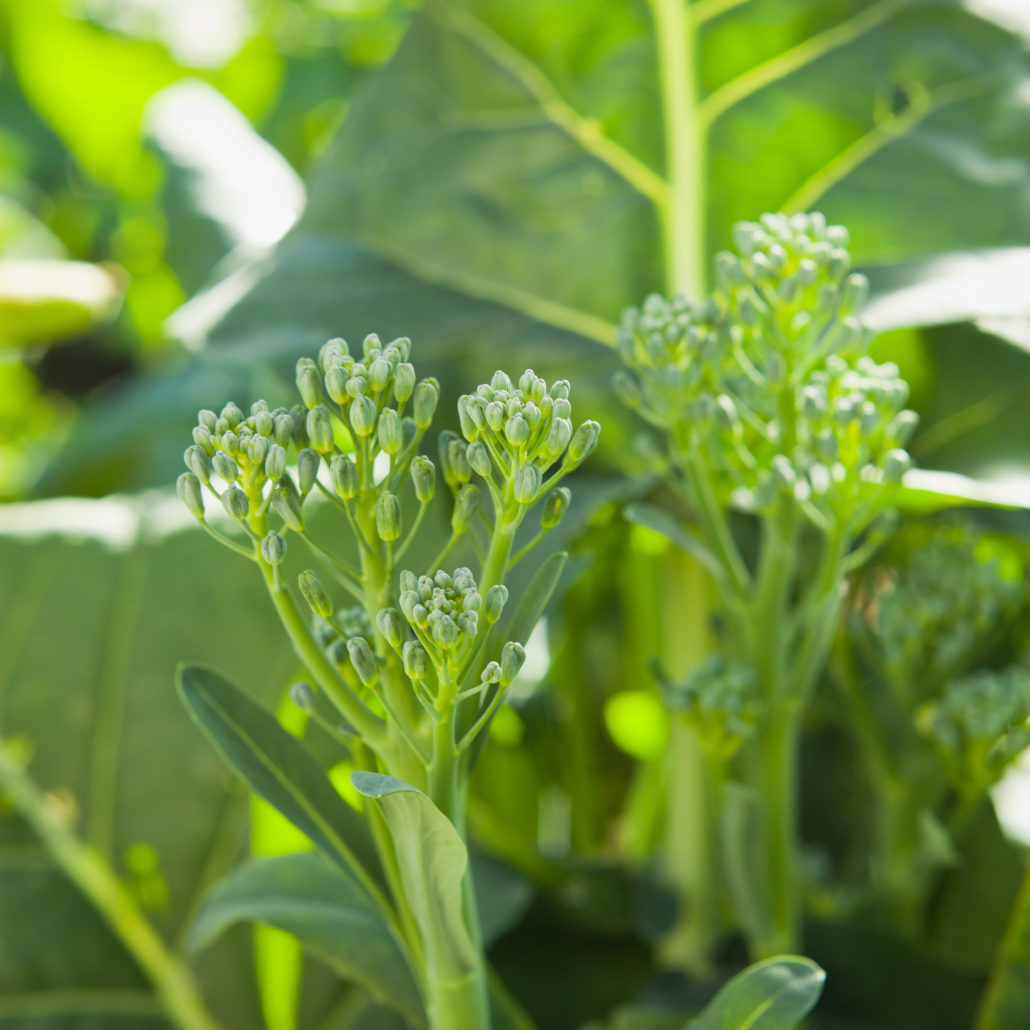By Stefan van Wyk,
PhD Biotechnology (University of Pretoria)
Head of Biological Research and Product Development for Victus Bio
The rapid development of agriculture in recent decades relied mainly on improved crop varieties, modern irrigation methods, and new agrochemicals such as pesticides and fertilisers. However, that doesn’t imply that there isn’t room for new strategies and developments in the sector.
The global agricultural biologicals are projected to grow immensely. This is due to the fact that improvements in the use of biological methods and development of new biological products fit well into the needed improved crop production strategies, as demonstrated with Agri Technovation’s holistic approach to plant nutrition.

There are various reasons for producers to consider the application of biologicals in growing their crops. The increasing incidences of pest outbreak in crops, the rise in awareness and demand for better quality yield, and even the development of pest resistance to some of the plant protection products are some of the major factors that are contributing to the increased use of biologicals in the market. Of these biologicals, bio-fertilisers and bio-pesticides have the potential to help a producer maintain a healthy and productive soil environment that is rich in a range of macro- and micronutrients.
There are a variety of mechanisms that will induce a richer soil environment, such as nitrogen fixation, phosphate and potassium solubilisation and/or mineralisation, the release of plant growth regulating substances, the production of antibiotics and biodegradation of organic matter in the soil. Although bio-fertilisers cannot completely replace chemical fertilisers, they can help reduce the use of chemical fertilisers contributing to sustainable agricultural systems.
Because of these reasons, the use of bio-fertilisers has become more prominent in a range of crops. It is said to work especially well as part of an integrated nutrient management system. These bio-fertilisers can be used in combination with chemical fertilisers to increase fertiliser-use efficiency without affecting yield.
Additionally, using biological products in conjunction with both bio-fertilisation activity and antagonistic/bio-pesticide potential has proven benefits for sustainable agriculture. One example of a tried and tested biological product is RhizoGUARDTM, which contains multiple strains of Bacillus spp., which are selected and combined for their numerous bio-fertiliser and bio-pesticidal roles.
The negative effects of fertiliser misuse
While it is well-known that fertiliser is a key element for optimum crop growth, it must be unpacked to see what effects the misuse of fertiliser can have on crops and even on the environment and the health of living beings.
Fertiliser misuse can have a widespread negative effect on the environment and human health. This is generally caused by the accumulation of heavy metals in the soil, eutrophication, air pollution, degradation of soil fertility, and lowering of soil microbe diversity. In turn, this can also limit the long-term sustainability of agriculture and food security.
To ensure sustained soil fertility and soil health, strategies to increase the quality of soils is necessary, which make bio-fertilisers and bio-pesticides interesting products, because these type of products increase the number of beneficial micro-organisms in the rhizosphere. This is why producers in South Africa and across the globe are paying more attention to these possible additions in their chemical strategies.
Biological products generally contain live or dormant cells of micro-organisms, which are efficient in fixing nitrogen, solubilising of phosphate and/or some elements, producing plant-growth promoting substances, and preventing some soil-borne diseases. The aim of a biological product is to increase the number of these useful micro-organisms in the soil and establishing these micro-organisms in the rhizosphere. Plants form mutually beneficial associations with these beneficial micro-organisms, leading to improved crop productivity.

Biological products are environmentally friendly and each type can provide different benefits:
- They increase the natural nitrogen content of soil and the supply or availability of nitrogen to legumes;
- They increase the solubility of the insoluble phosphate from organic and inorganic phosphate sources;
- They improve the phosphorus nutrition of plants;
- They secrete certain plant growth-promoting substances;
- They exhibit anti-fungal activities and protect plants from pathogenic fungi;
- They can replace chemical nitrogen and phosphorus and thereby help to protect the environment; and
- increase soil fertility, fertiliser-use efficiency, which ultimately increases yield.
These biological products can be applied in a variety of ways. They are generally produced in liquid, powder, and granular forms and applied to the soil, compost, seed, seedlings, and plant leaves. In the application of biological products, the instructions and warnings on the label must be followed diligently. The main methods of applying biological products include a) on-seed application, b) in-furrow application, c) drench application through the pivot, and even d) sprayed onto plant leaves.
In certain situations, the application of biological products may fail or be ineffective.
The main reasons for this can be high soil fertility, unfavourable pH, a high nitrate level, high temperatures, drought, deficiencies of P, Cu, Co, Mo or presence of toxic elements, and biological products that are of low quality.
The key point is that biological products may contain living organisms and can be sensitive to environmental factors, so they are not as stable as chemical compounds.
Promoting plant growth with bio-fertilisers
Bio-fertilisers that make use of multiple strains of plant growth-promoting rhizobacteria (PGPR) is a well-known approach that could enhance the colonisation of the rhizosphere.
PGPR is a group of free-living bacteria that colonise the rhizosphere and can prove beneficial to root growth. Bacteria of these diverse genera were identified as Bacillus and Pseudomonas spp.
RhizoGUARDTM, which is a product offered by Agri Technovation, is an example of one of these bio-fertilisers that contain Bacillus subtilis and Bacillus amyloliquefaciens strain FZB42 (a root-colonising biocontrol bacterium). The multiple strains of Bacillus spp. are selected and combined for their synergistic plant growth-promoting benefits.
Each strain produces different enzymes that degrade compounds in the soil contributing to the release of nutrients normally inaccessible to plants, inadvertently promoting plant growth. The competitive interaction of these Bacillus spp. further improves their plant growth-promoting effectiveness.
Bacillus bacteria can especially further act as both bio-fertilisers and/or antagonists (bio-pesticides) or simultaneously as both. The plant growth-promoting activity of these Bacillus spp. are linked with their ability to suppress soil-borne plant pathogens, occurring in the competing microflora.

The advantages of bio-pesticides
Bio-pesticides have a variety of advantages and can be classified into these classes:
- Microbial pesticides, which consist of bacteria, entomopathogenic fungi or viruses (and sometimes includes the metabolites that bacteria or fungi produce).
- Entomopathogenic nematodes are also often classed as microbial pesticides, even though they are multi-cellular.
- Plant-incorporated protectants (PIPs) have genetic material from other species incorporated into their genetic material (i.e. GM crops).
- Bio-derived chemicals, like pyrethrum, rotenone, neem oil, and various essential oils, are naturally occurring substances that control (or monitor in the case of pheromones) pests and microbial diseases.
- Plant-incorporated protectants (PIPs) have genetic material from other species incorporated into their genetic material (i.e. GM crops).
- RNAi pesticides, some of which are topical and some of which are absorbed by the crop.
The Bacillus amyloliquefaciens strain FZB42 found in RhizoGUARDTM produces a biofilm in the root zone, which acts a beneficial barrier between the plant and pathogens, protecting the plant from a broad range of pathogens; not only by the production of antimicrobial compounds but also by stimulating plant-induced systemic resistance (ISR). These pathogen–biocontrol interactions contribute to their combined suppressive effect, however, perform best when applied in a preventative approach.
A survey studied in literature demonstrates the potential and versatility of Bacillus amyloliquefaciens strain FZB42, found in RhizoGUARDTM, to combat various pathogenic microorganisms {1-8}. The most important advantage of bio-pesticides is its capability to degrade on a molecular level. This is something that could be more effective in the long-term, effective in small quantities, and can aid in quick decomposition, which will decrease levels of pollution.
In conclusion, the use of bio-fertilisers and bio-pesticides can enable optimal plant growth, fertiliser-use efficiency, increase in soil fertility and health, and ultimately increase plant yield potential. This is where a product like RhizoGUARDTM can improve on a producer’s current agricultural crop and fertiliser management system.
Reference list for further reading:
1. Chen XH, Scholz R, Borriss M, et al. 2009. Difficidin and bacilysin produced by plant-associated Bacillus amyloliquefaciens are efficient in controlling fire blight disease. Journal of Biotechnology: 140(1-2):38-44.
2. Wu L, Wu H, Chen L, Yu X, Borriss R, Gao X. 2015. Difficidin and bacilysin from Bacillus amyloliquefaciens FZB42 have antibacterial activity against Xanthomonas oryzae rice pathogens. Scientific Reports. 5:12975.
3. Tahir HA, Gu Q, Wu H, Niu Y, Huo R, Gao X. 2017. Bacillus volatiles adversely affect the physiology and ultra-structure of Ralstonia solanacearum and induce systemic resistance in tobacco against bacterial wilt. Scientific Reports. 16;7:40481.
4. Gu Q, Yang Y, Yuan Q, et al. 2017. Bacillomycin D Produced by Bacillus amyloliquefaciens is involved in the antagonistic interaction with the Plant-Pathogenic Fungus Fusarium graminearum. Applied Environmental Microbiology. 83(19):01075-17.
5. Yusran Y, Roemheld V, & Mueller T. 2009. Effects of Pseudomonas sp. ”Proradix” and Bacillus amyloliquefaciens FZB42 on the Establishment of AMF Infection, Nutrient Acquisition and Growth of Tomato Affected by Fusarium oxysporum Schlecht f.sp. radicis-lycopersici Jarvis and Shoemaker. UC Davis: Department of Plant Sciences.
6. Arguelles-Arias A, Ongena M, Halimi B, et al. 2009. Bacillus amyloliquefaciens GA1 as a source of potent antibiotics and other secondary metabolites for biocontrol of plant pathogens. Microbial Cell Factories. 8:63.
7. Sylla J, Alsanius BW, Krüger E, et al. 2015. Control of Botrytis cinerea in strawberries by biological control agents applied as single or combined treatments. European Journal of Plant Pathology. 143, 461–471.
8. Salvatierra Martinez, R, Arancibia, W, Araya, M, Aguilera, S, Olalde, V, Bravo, J, Stoll, A. Colonization ability as an indicator of enhanced biocontrol capacity—An example using two Bacillus amyloliquefaciens strains and Botrytis cinerea infection of tomatoes. Journal of Phytopathology. 2018; 166: 601– 612.
9. Wu L, Huang Z, Li X, Ma L, Gu Q, Wu H, Liu J, Borriss R, Wu Z, Gao X. 2018. Stomatal Closure and SA-, JA/ET-Signalling Pathways Are Essential for Bacillus amyloliquefaciens FZB42 to Restrict Leaf Disease Caused by Phytophthora nicotianae in Nicotiana benthamiana. Frontiers in Microbiology. 27;9:847.
For more information contact Agri Technovation on +27 21 300 0543 | info@agritechnovation.co.za or visit www.agritechnovation.co.za





